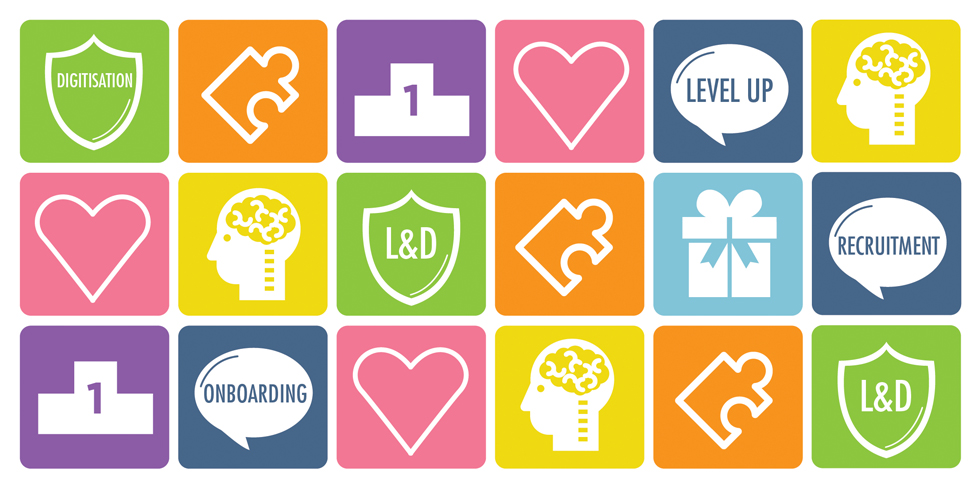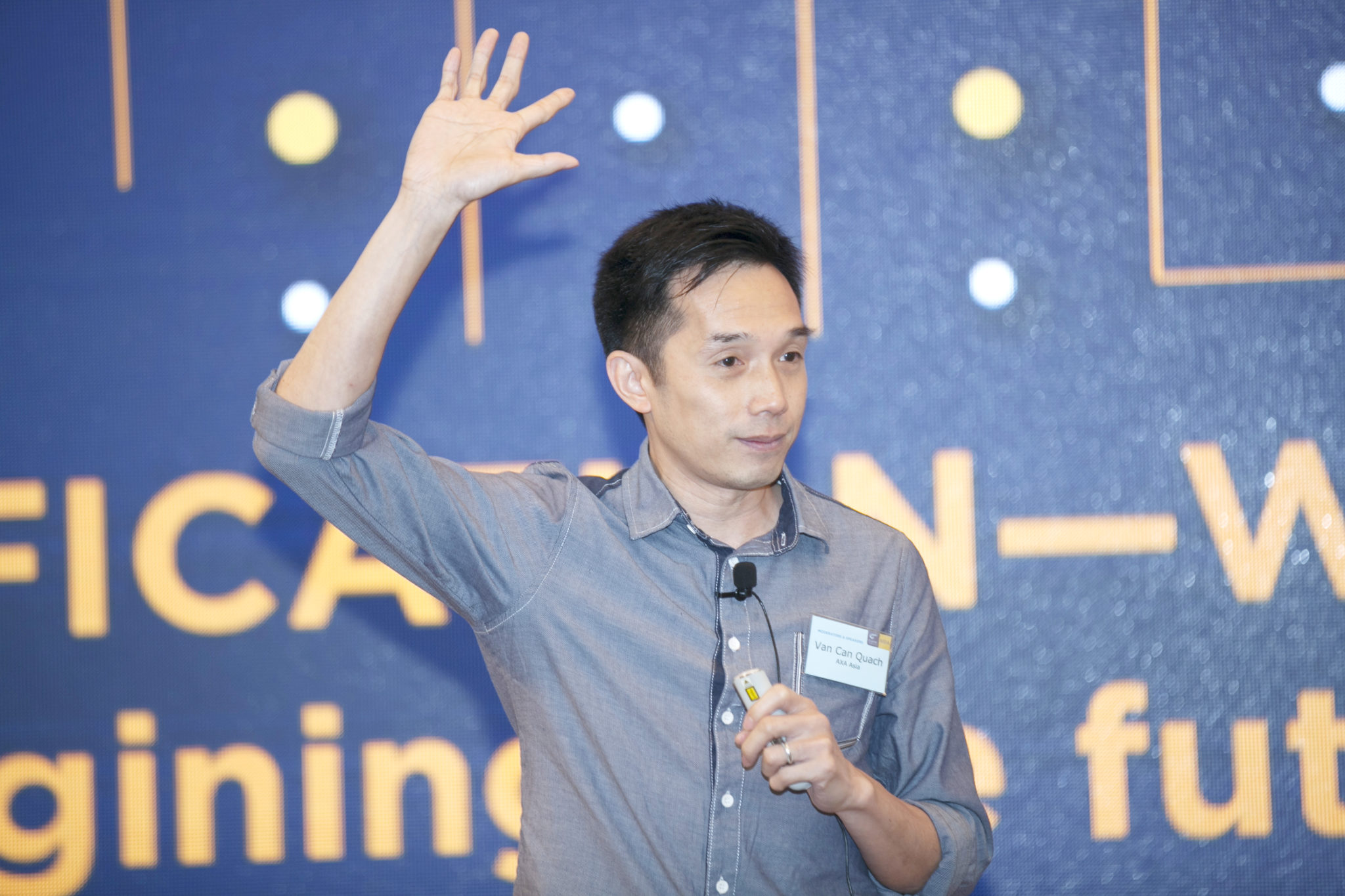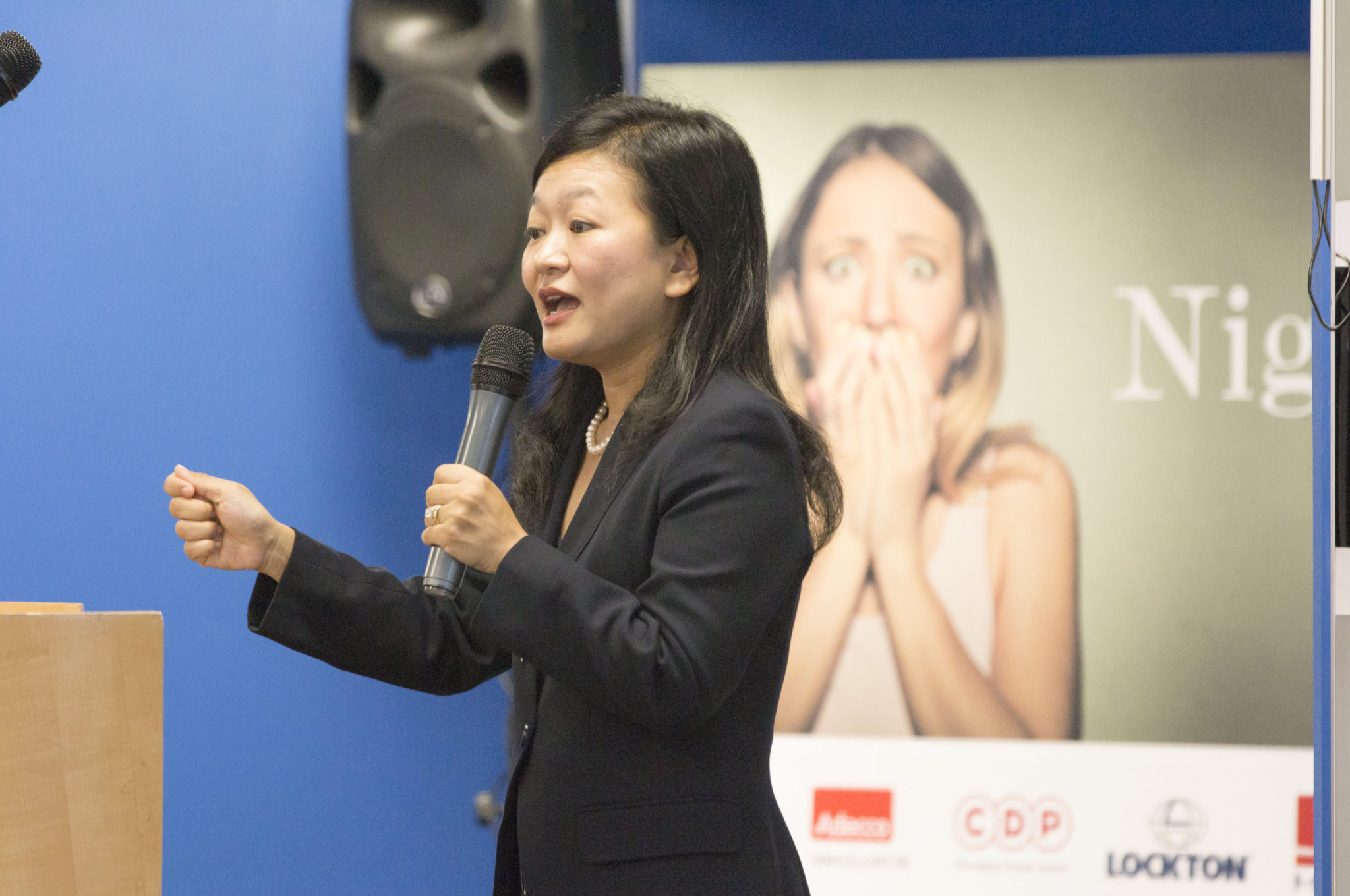
Gamification has gained a lot of traction recently as a way to engage talent and enhance retention and employee brand loyalty. The successful application of gamification is well documented in HR, and the profound impact it can make on the workplace well known. Despite this, many organisations are still struggling with how to actually adopt and implement gamification in the various aspects of employee lifecycles. Managed correctly, gamification can boost employee motivation, foster positive behaviours, facilitate innovation, help disseminate key corporate messages and ultimately drive business success. Gamification in HR works by extracting the behaviour-motivating techniques from traditional games and then applying them to what has been traditionally a non-game-related working task. In terms of incentivising employees, aside from making work tasks more fun, gamification has another advantage over traditional incentive structures because its effects are longer lasting. The study A Video Game Training and the Reward Systems, published in Frontiers of Human Neuroscience found that behaviours learned through gaming tend to stay with players far longer than those learnt through traditional means. In this sense, gamification is a powerful but flexible tool that has found use in a variety of different contexts within HR.
Transforming employer branding via gamification
AXA recently embraced gamification as a tool to enhance its brand awareness among the young generation, launching The Great Global Adventure – a series of mini-games that highlighted AXA’s international breadth of work. Van Can Quach, Regional HR Manager, Talent Attraction and Strategic Initiatives, AXA Asia explained the thinking behind their new approach: “HR needs more than just a game to attract talent—they need a healthy incentive. A free pen and notepad will not really cut it anymore. So we came up with a grand prize that was an exciting blended experience combining internships at two of our international offices with round-the-world travel.”

Van Can Quach, Regional HR Manager, Talent Attraction and Strategic Initiatives, AXA Asia
In doing so, AXA was able to communicate a message about their culture in a way that would have been impossible through a traditional ‘About Us’ section on their website. The company was also able to leverage the platform to help further strengthen and communication their employer brand and EVPs to prospective employees. Quach went on to say that “We wanted to dispel the rather stuffy traditional image we had in the eyes of students. The fact is you don’t need to wear a suit and a tie to work at AXA.”
Beyond carrying the employer brand of AXA, The Great Global Adventure had a dramatically positive effect in attracting new talent. Among the 46,000 players the game successfully gathered, 34% of them learned about AXA for the first time—developing an all-important point of first contact with young potential hires. The same post-game surveys showed that 86% of the players now consider working for AXA—quantitatively demonstrating the effectiveness of the game in generating career interest.
Quach described this as an ongoing opportunity, “Beyond satisfying our immediate recruitment needs, the gamification also allowed for specific data-gathering not just in terms of prospective candidate contact details, but also how well they performed various aptitude tests during the games. In this way, gamification allowed a level of pre-screening of potential hires based on key metrics. With the 46,000 candidates, the job was now to maintain a dialogue with them.” He continued, “We keep interacting with the talent over Instagram (@ greatglobaladventurer), and updating them on the current winner of the adventure, leaving our options open if we want to connect with unsuccessful candidates with roles they are a good fit for.” This approach is similar to priming in marketing; a response will be more positive when someone is familiar with an organisation and has recent exposure to them. By contrast, an invitation to apply out of the blue is likely to go unopened sitting in an inbox.
Engagement, compliance & crowdsourcing via gamification
Deloitte Consulting has deployed gamification to further increase employee engagement within their compliance teams. Compliance officers are given a virtual tower, which grows as the employee inputs relevant compliance data into the company’s system. The reward of watching the tower grow over time is designed to motivate and drive employees in the medium to long term. Sunny Ip, Director, Deloitte Consulting commented, “Gamification touches on the innate elements of human nature which keep us excited and engaged. This helps employers connect with younger employees who are no longer incentivised by money and titles.”

Sunny Ip, Director, Deloitte Consulting
However, Ip warned against rushing into gamification as a quick fix to HR issues, cautioning that unless properly thought out, they can unintentionally incentivise bad behaviour. Consider sales and leader boards, which traditionally reward those that sell the most without necessarily examining a person’s methods. Thus, sales leader boards can reward an aggressive and high pressure sales style that may result in a large volume of sales in the short term, but which may damage the reputation and the capacity of a company to continue to sell in the future. Ip suggests HR first ask themselves: What is the behaviour I want to improve and incentivise? Only then can they examine how and why HR really wants to develop something. He added, “It is vital that when HR implements gamification, they need to ensure they are rewarding the right behaviours. Such an analysis should include quantifiable metrics to measure success and help set targets for the future.”
While this approach may seem daunting, gamifying a process does not have to be complex and can be part of an evolving HR environment. Ip suggested, “Badging and leader boards are great first steps, provided that the right behaviour is targeted. But, often it is not necessary to start from scratch. Many organisations have social intranets already in place which can serve as a staging ground for development.” One example of this is internal social platforms which can be very useful for staff, but often sit underutilised. Intertwining gaming elements into such platforms can significantly promote their usage.
In this way, such gamified platforms can then be utilised to help solve employees’ unanswered questions. If a staff member is unsure how to complete a critical task and is uncertain who to ask, they can post it as an open question on the platform to crowdsource an answer. Employees who respond earn points, and the answer voted as best receives a bonus. Such a system is not only more engaging and rewards employees who put forward suggestions, but at the same time increases the variety of solutions put forwards and breeds a culture of openness, community and innovation throughout the workplace.
Onboarding and rewarding with gamification & VR360
At JTH Group gamification has recently been integrated throughout the workplace. Jenny Pong, Group Director, Human Resources, JTH Group emphasised, “The most important thing to consider about gamification is that it should be fun. If staff are not enjoying the games, then they are unlikely to develop new positive behaviours.” To ensure they got this right, JTH have incorporated Virtual Reality into their onboarding process. Pong commented, “Right from the start, new staff are introduced to JTH with a virtual reality (VR360) tour as part of onboarding. Staff are encouraged to test out the VR360 goggles and get familiar with the technology.” This not only makes orientation a lot more fun, it also sets the stage for further innovative thinking. Pong added, “Employees are challenged to come up with ideas as to how virtual reality can be leveraged to enhance the business and to improve the working environment. Through setting common goals, staff can work together and crowd source ideas that drive business and improve quality of life within the office.”

Jenny Pong, Group Director, Human Resources, JTH Group
Pong explained the rationale behind such a programme, “There were two questions posed to our team at JTH Group: How can we connect our people better? And how can we make people more innovative?” The HR department put their heads together and came up with a creative solution to increase both connectivity and innovation. Traditionally, companies achieved employee connectivity through developing an intranet, but doing often proved time-consuming and expensive. Technological advancement outside the office has already produced a much more interesting way of connecting people—social media. Smart HR teams are now realising the benefits of social media for enhancing employee connectivity, engagement and speed of communication. At JTH, in terms of enhancing innovation, the team decided that the fastest route would be to lead by example. HR could have brought in traditional trainers to conduct courses and L&D programmes focused on innovation, but, as Pong declared, “Actions speak louder than words. Rather than just using buzzwords, we needed to act as innovators ourselves.” The HR team developed a company-wide social media app. The app promotes connectivity through features where employees can share joyful moments, both in and out of work; give public recognition to colleagues for a job well done; and benefit from VR360 tours of JTH offices worldwide. Employees are proactively encouraged to share new ideas with each other, as well as like and comment on each other’s posts. Rather than getting bogged down in over thinking the challenges of taking such a game-changing step, Pong encouraged HR to lead the way in trying new things. Pong evangelised, “Fail fast, learn fast, fix fast is a much better way for HR to innovate.” And often what may be initially perceived as ‘challenges’ may not actually transpire as such in reality. For example, before releasing the JTH gamified platform, there were considerations as to how to inspire good etiquette and polite exchanges between different employees, but in reality negativity on the app was really a non-issue. Pong emphasised, “Sometimes you just need to get something out quickly, learn from it, and then see how you can fix it. If you want to inspire your employees to take more risks without fear of failure, it is HR themselves who must be leaders in taking risks.”
Success and implementation
One key consideration to successfully implementing any gamified workplace platform is solid planning. Philippa Penfold, Senior HR Manager, Infosys Consulting explained, “Conceptually poor gamification can simply add noise, flooding the workplace with more distractions and potentially adding useless information. The key is to design gamification to enhance or replace existing structures and communication channels, and to keep unnecessary chatter to a minimum.”
Another important consideration is that once you have someone’s attention, how does HR hold onto it? Once an employee logs off of their workstation, or steps outside of the office, how can gamification have a real impact on how they behave or interact with their business? HR must address this to ensure their gamified platform provides a measurable ROI. Penfold recommends that the process of gamification be approached as a medium to long-term process rather than a quick fix, with a focus on sustainability and longevity. She also suggests the use of pilot schemes to make sure that any teething problems can be identified early on and quickly ironed out, as well as engaging senior management. She adds that used properly, gamification can have a large ROI (in terms of culture and behaviour) even with a comparatively low budget. Gamification therefore appeals to cash conscious HR managers not just for its flexibility, but also for its utility.
Game on—Getting started with gamification in HR
- What’s to gain?
Assess what your organisation can gain from adding gaming mechanisms. - What do you need?
Consider whether elements can be imposed on top of a pre-existing process. For example, if there is already a company intranet in place then it is really necessary to develop a whole new infrastructure? - Start small.
Test the water before going all in—focus on one mechanism of gamification and experiment with that first. - Run a pilot.
Use a pilot trial in one team or department first. Assess the pros and cons and use methods at hand for measuring success and demonstrating ROI in one department before rolling out across the organisation.





